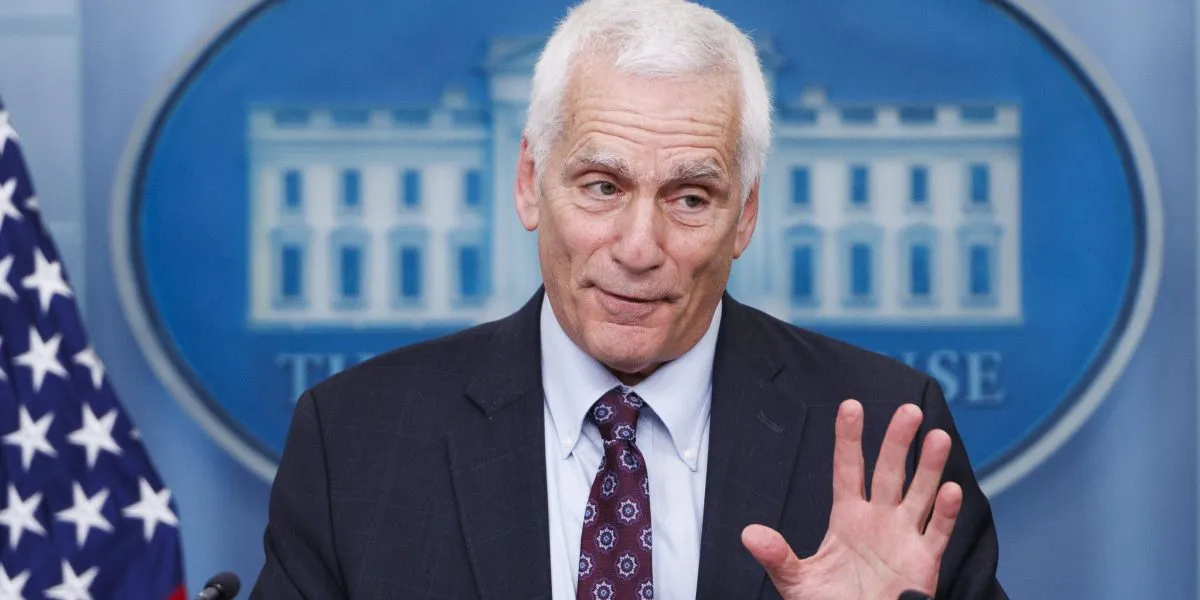
In a revealing op-ed published in the New York Times on Wednesday, economic expert Jared Bernstein acknowledged his transformation from a longtime dove on budget deficits to aligning with the hawks. He emphasized that the current state of our nation’s budget math has become alarmingly precarious, urging a reconsideration of fiscal policies. “No longer. I, like many other longtime doves, am joining the hawks, because our nation’s budget math just got a lot more dangerous,” Bernstein stated.
Bernstein elaborated on the critical relationship between economic growth and the interest rates on national debt. He referenced the insights of renowned economist Olivier Blanchard, explaining that governments can manage budget deficits effectively if their Gross Domestic Product (GDP) grows at a faster pace than the interest accrued on their debt. This concept is likened to the financial responsibilities of college graduates who can maintain their monthly loan payments as long as their income rises more rapidly than their student debt.
“Conversely, though, if they borrowed to the hilt—and if their student loan debt starts growing faster than their income—they can quickly get in trouble,” Bernstein cautioned, drawing a parallel to the current financial struggles of the nation. This analogy is particularly relevant, given the alarming rise in delinquency rates among student loan borrowers, leading to wage seizures and plummeting credit scores.
According to the Brookings Institution, the number of Americans burdened with federal student loans surged from 21 million to a staggering 45 million between 2000 and 2020. During the same period, the total student debt soared from $387 billion to an eye-watering $1.8 trillion, outpacing growth in any other category of household debt. This overwhelming student debt crisis serves as a stark reminder of the potential dangers of unchecked borrowing.
Traditionally, the federal government’s debt costs relative to income appeared manageable. However, the landscape shifted dramatically in recent years. The inflation-adjusted yield on 10-year Treasuries, which once remained below the 10-year forecast for economic growth, has recently converged with growth rates at just above 2%. This change is attributed to extensive government spending during the pandemic and rising inflation, prompting the Federal Reserve to increase interest rates substantially.
“That’s a potential game changer for debt sustainability,” Bernstein warned, highlighting the need for a strategic reevaluation of fiscal policies. While he refrained from directly addressing the Biden administration’s significant contributions to the national debt through expansive spending, he instead pointed fingers at the economic policies of former President Donald Trump. Bernstein criticized Trump’s trade war and the recent tax-and-spending bill that he enacted, noting that high tariff rates would hinder economic growth while exacerbating inflation and interest rates.
To mitigate the risk of a debt shock that could force the government into drastic spending cuts or tax increases, Bernstein proposed that Congress establish predetermined “break-glass moments” accompanied by binding fiscal responses. Presently, the U.S. is already paying more in interest on its debt than it allocates for crucial programs like Medicare and defense. According to the Committee for a Responsible Federal Budget, these interest payments are projected to reach $1 trillion next year, making them the government’s second-largest expenditure after Social Security.
Moreover, Trump’s tax cuts and spending initiatives are anticipated to add trillions to the deficit in the coming years, with the debt-to-GDP ratio poised to exceed post-World War II records. “But that path remains unsustainable: The primary deficit is much larger than usual in a strong economy, the debt-to-GDP ratio is approaching the postwar high, and much higher real interest rates have put the debt and interest expense as a share of GDP on much steeper trajectories than appeared likely last cycle,” Goldman Sachs underscored in a note last month.
As the nation grapples with these pressing economic challenges, Bernstein's call for a collective reassessment of fiscal strategies emphasizes the urgent need for sustainable financial practices to safeguard the future of the American economy.